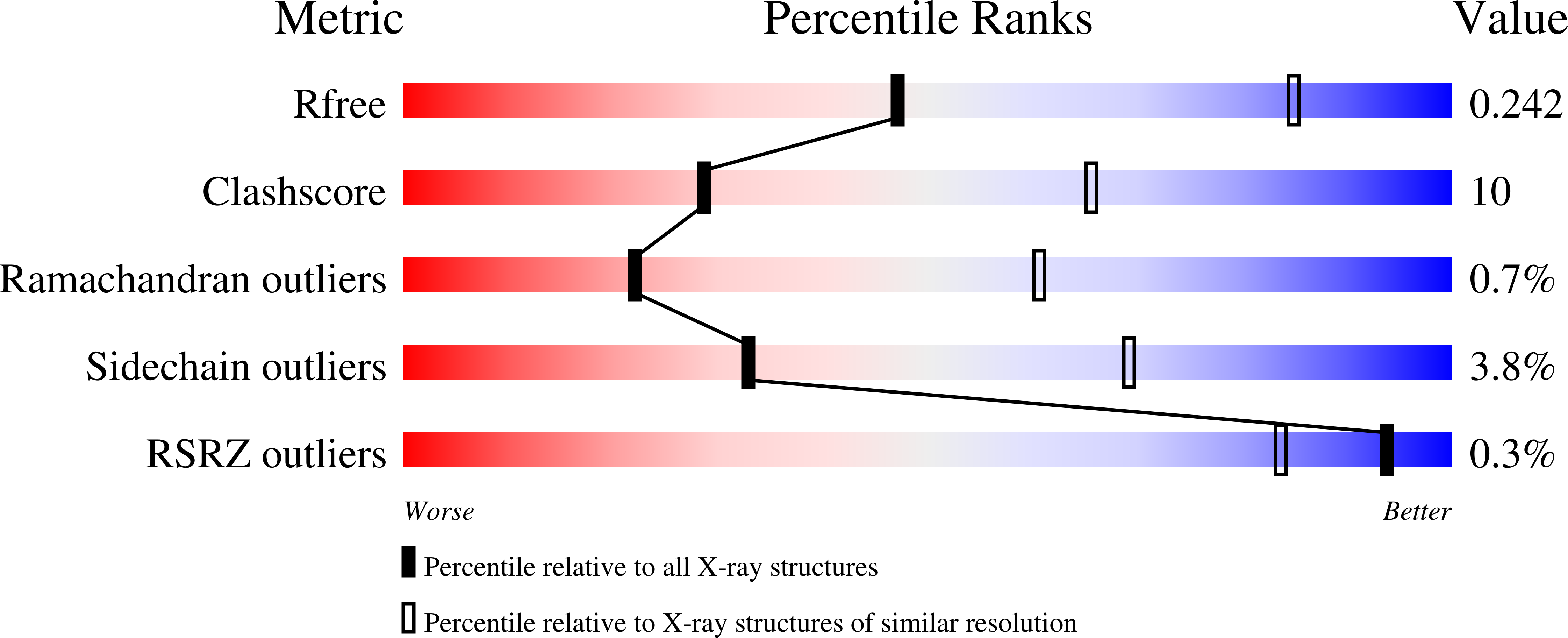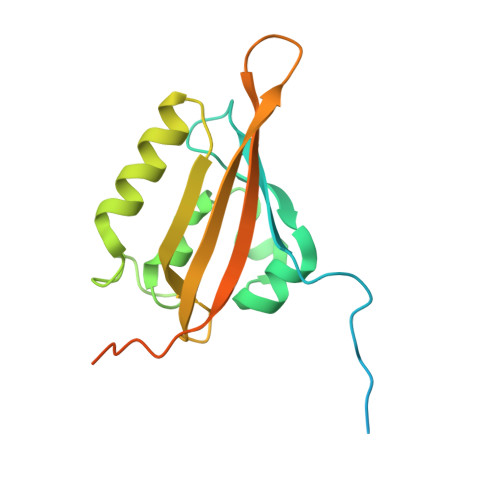Steric and Electronic Interactions at Gln154 in ZEITLUPE Induce Reorganization of the LOV Domain Dimer Interface.
Pudasaini, A., Green, R., Song, Y.H., Blumenfeld, A., Karki, N., Imaizumi, T., Zoltowski, B.D.(2021) Biochemistry 60: 95-103
- PubMed: 33337855
- DOI: https://doi.org/10.1021/acs.biochem.0c00819
- Primary Citation of Related Structures:
6WLE, 6WLP - PubMed Abstract:
Plants measure light quality, intensity, and duration to coordinate growth and development with daily and seasonal changes in environmental conditions; however, the molecular details linking photochemistry to signal transduction remain incomplete. Two closely related light, oxygen, or voltage (LOV) domain-containing photoreceptor proteins, ZEITLUPE (ZTL) and FLAVIN-BINDING, KELCH REPEAT, F-BOX 1 (FKF1), divergently regulate the protein stability of circadian clock and photoperiodic flowering components to mediate daily and seasonal development. Using structural approaches, we identified that mutations at the Gly46 position led to global rearrangements of the ZTL dimer interface in the isolated ZTL-LOV domain. Specifically, G46S and G46A variants induce a 180° rotation about the ZTL-LOV dimer interface that is coupled to ordering of N- and C-terminal signaling elements. These conformational changes hinge upon rotation of a C-terminal Gln residue (Gln154) analogous to that present in light-state structures of ZTL. In contrast to other LOV proteins, a Q154L variant retains light-state interactions with GIGANTEA (GI), thereby indicating N5 protonation is not required for ZTL signaling. The results presented herein confirm a divergent signaling mechanism within ZTL, whereby steric and electronic effects following adduct formation can be sufficient for signal propagation in LOV proteins containing a Gly residue at position 46. Examination of bacterial LOV structures with Gly residues at the equivalent position suggests that mechanisms of signal transduction in LOV proteins may be fluid across the LOV protein family.
Organizational Affiliation:
Department of Chemistry, Southern Methodist University, Dallas, Texas 75275, United States.
















